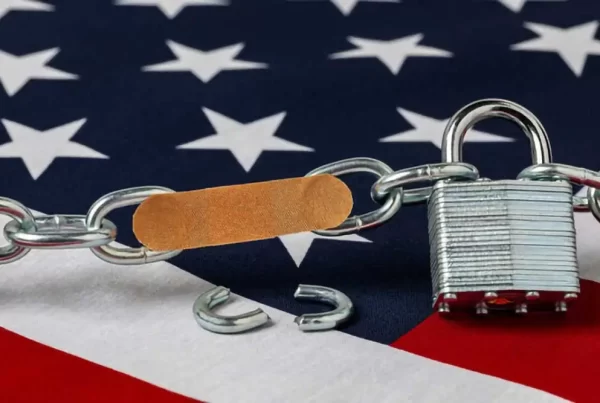President Donald Trump signed an executive order on January 25, 2017, outlining a series of actions he directs the DHS, DOJ and related agencies to take in regards to internal enforcement of U.S. immigration law and to border security. Many of these actions are already part of federal law, but many others will require congressional approval and appropriation of funds to carry out. Much of what President Trump did today in this specific Executive Order (not the one on visa processing and refugees), will have an immediate impact on people’s lives, but will not do anything to solve the problem of a broken immigration system.
Here is what this Order does:
1. Calls for planning, designing and constructing a wall on our international border with Mexico. This will require extensive funding from Congress (e.g. the American Taxpayer) for the immediate cost of about $25 Billion Dollars (give or take a few billion). He also called for maintaining the wall (more billions), and called for a “study” within 180 days, that analyzes various aspects of southern border security. There is NOTHING in this executive order that explains HOW Mexico will pay for the “Great Wall” or where funding will come from.
2. Calls for the construction of detention camps to detain anyone entering the US with Mexico. According to some people, these camps are ready to go now. But in reality, carrying out this provision would require an immense amount of spending, or the use of private detention facilities (which already are notorious for holding immigration detainees), both of which Congress would have to authorize.
3. Calls for Asylum officers to be assigned to all detention facilities to conduct credible fear interviews for new arrivals detained by ICE and CBP (there is currently a delay in some facilities of several weeks for such interviews to take place, and sometimes no interviews are had at all). This will result in an already 2-4 year wait for affirmative asylum cases being delayed, because there is a limited supply of trained Asylum Officers (and a Trump required hiring freeze).
4. Calls for DOJ to assign Immigration Judges to detention facilities to conduct removal proceedings on site. There are no “extra” immigration judges floating around looking for work, so this will mean that non-detained cases will be continued out longer than the current four year average wait time (and much longer in some areasacross the US.
5. Anyone now encountered by ICE or CBP (and possibly USCIS), who is in violation of immigration law will now be held presumably without bond by ICE until their removal proceedings are complete. This would require a LOT more funding, and a lot of FEMA camps. We will be doing a lot of bond hearings!
6. Trump will try to return people to the countries the came from during the time they are in removal proceedings. This only applies to Canadians and Mexicans under the relevant statute, and has been used on Canadians for years, but not with regularity for Mexicans. It will be interesting to see how DHS thinks they can do this.
7. Trump wants 5,000 more Border Patrol agents. Where they are getting new agents from or how they are paying for them is not mentioned in the order. Again, this will require Congressional funding (and a really good HR person).
8. All “foreign aid” to Mexico will be reported on within 90 days, for each of the last five years. Is this intended to embarrass Mexico? Pretty sure it won’t work! But it could be quite dangerous from a foreign policy perspective.
9. 287(g) is coming back. These are the agreements between federal, state and local law enforcement, that co-locates and trains local law enforcement in immigration enforcement. Basically, this executive order wants to turn local law enforcement into ICE agents. To the extent that local law enforcement wants to do this, they now have backing from the President. How they do it without running afoul of the equal protection clause is another matter. . But, the reality is that few if any local law enforcement officlals want to be immigration officers. This action will also require an immense amount of new funding authorized by Congress. What we expect to see here is simply a repeat of what we saw for the first six years under President Obama. Lots of people who have clean records who are stopped for driving without a license, put into deportation proceedings, further clogging a broken court system. Not exactly how best to enforce immigration law, but perhaps it will make some people feel better.
10. Advance Parole and Humanitarian Parole may become more difficult to obtain. This specific Order requires USCIS, ICE and CBP to only issue paroles on a case by cases basis (which they currently do) and only when the individual demonstrates urgent humanitarian reasons or a significant public benefit from the parole (the current standard). We do NOT know what this means in practice yet, so in an abundance of caution, we are advising DACA individuals with parole to NOT travel outside the US on their already issued advance paroles until we get further information from USCIS and CBP.
11. The Order also wants to deport unaccompanied minors back to their home country as quickly as possible. This would be in direct contravention of current US law, as it applies to special immigrant juveniles. We will see how this section plays out in the context of contravening US immigration law.
12. People who “abuse” the asylum process (such as those filing for asylum to get a work permit, or to extend their stay in the US when they have no actual claim to asylum) will be dealt with using the “appropriate action” of federal law (this may refer prosecutions for filing false applications, but section is far from clear).
13. A significant change is the use of Expedited Removal for anyone who cannot prove they have been in the US for two years or longer. This is a significant change in policy for many countries, and while it may reduce the number of new border cases in immigration court, it is unclear whether it will have an affect on those inside the US for less than two years. We do know that DHS has repeatedly not followed protocols in using Expedited Removal, so the expansion of the program bodes ill for those subject to its abuses.
14. Trump has now given any federal, state or local officer the right to enter “federal land” and conduct immigration enforcement actions. It is unclear whether this means tribal lands controlled by Native American Nations with treaties with the US government.
15. The order calls from the increased prosecution of immigration offenses. likely augmenting the work of Operation Streamline. This will continue to fill our federal facilities with immigration violators, at the expense of US Taxpayers. Perhaps Trump does not know this, but there is no measurable reduction in repeat illegal immigration from this expensive government “program.”
For now, many of these actions will have a negligible effect because to fully implement them will require massive amounts of new allocated spending from the Congress,and many of them, even if funded, will do nothing to fix the problem of undocumented immigration. Some will say that most of this is for “show.” But some of these actions will impact lives for the negative. Someone once said that “when you do it unto the least of these, you have done it unto me,” It would be well to remember that powerful admonition, especially when we are dealing with vulnerable women and children seeking asylum.





Would it be OK if I cross-posted this article to WriterBeat.com? I'll be sure to give you complete credit as the author. There is no fee, I'm simply trying to add more content diversity for our community and I liked what you wrote.
If "OK" please let me know via email: AutumnAutumnCote@WriterBeat.com
Sure